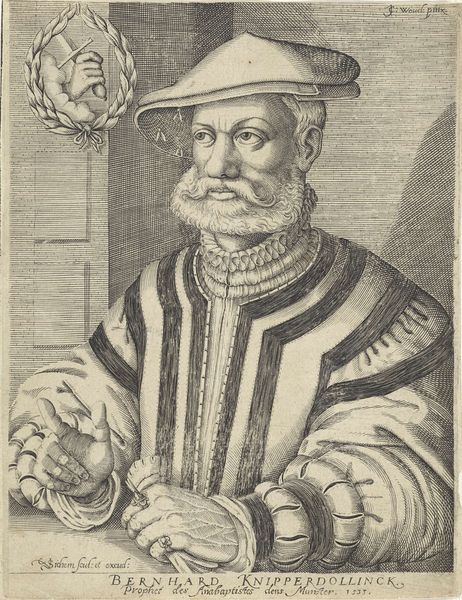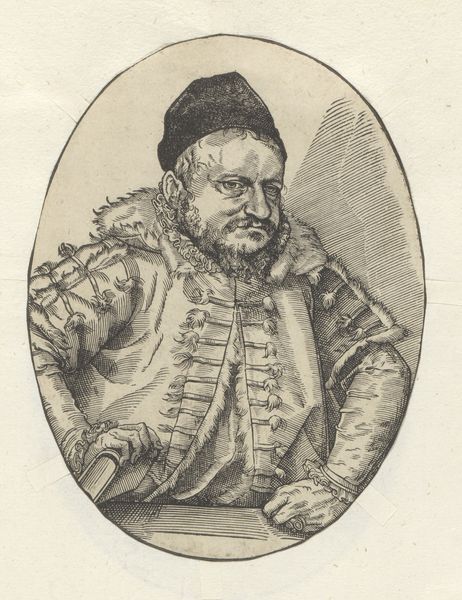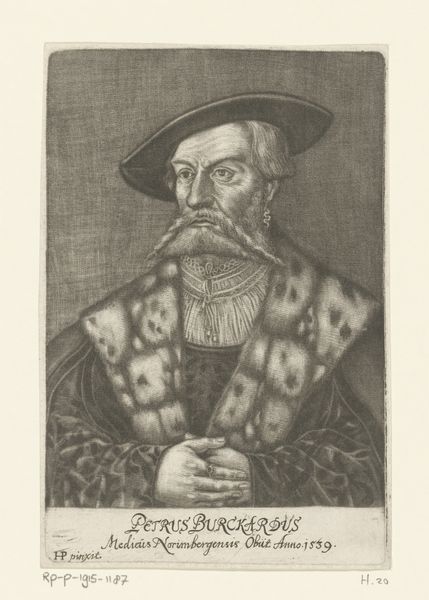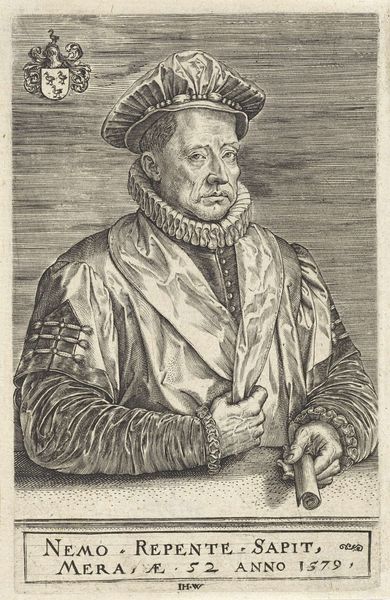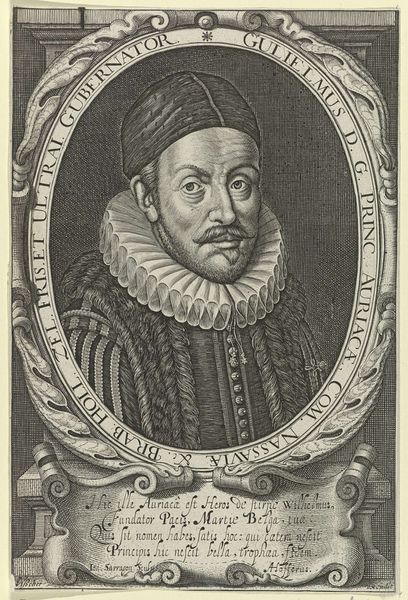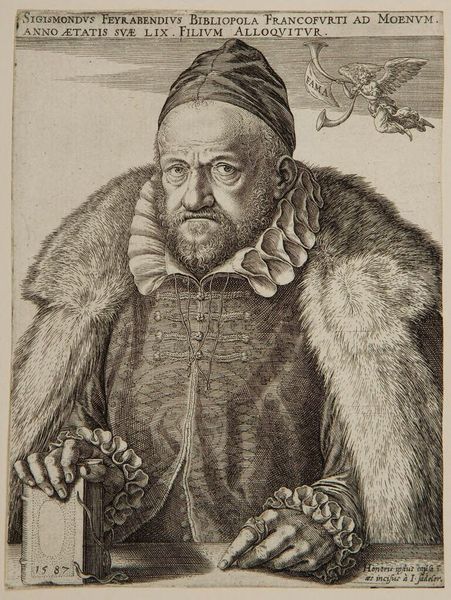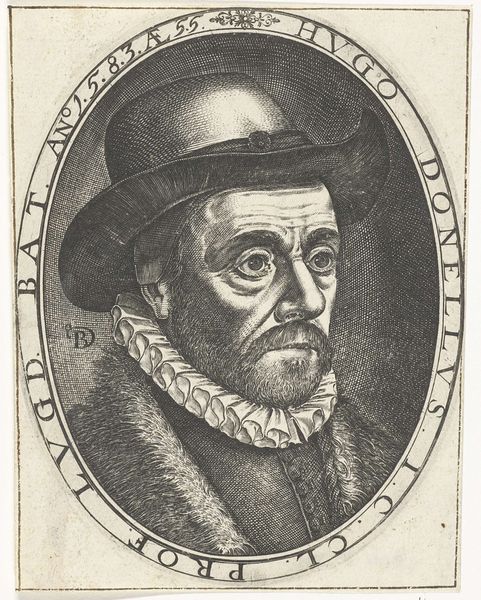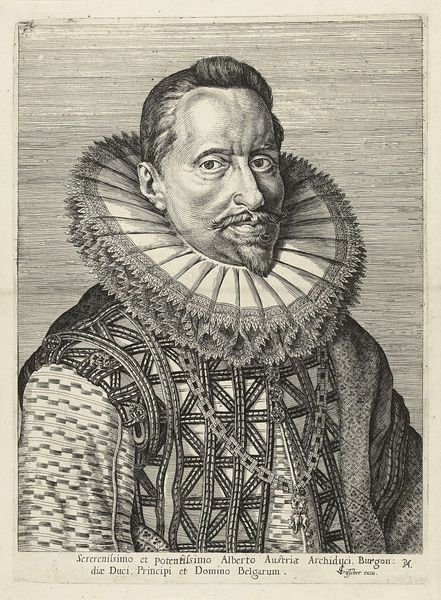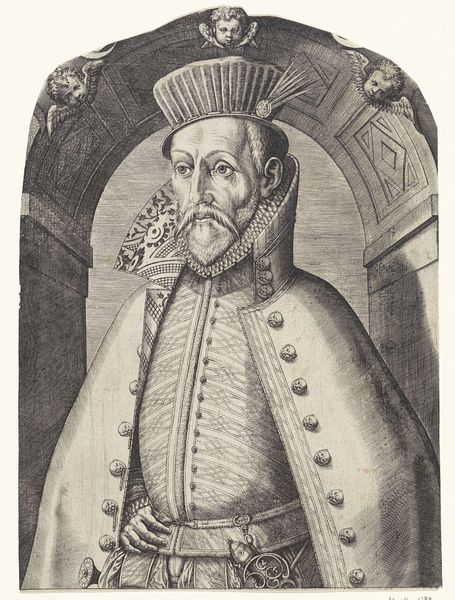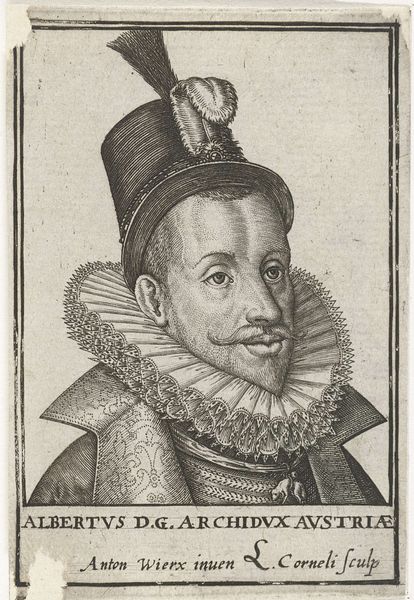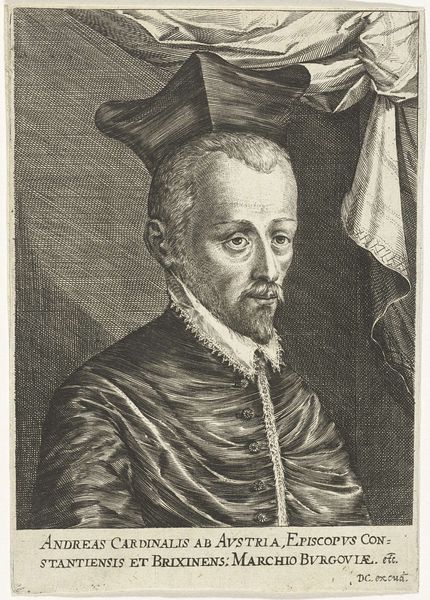
print, metal, engraving
#
portrait
#
facial expression drawing
#
baroque
# print
#
metal
#
figuration
#
form
#
line
#
portrait drawing
#
history-painting
#
academic-art
#
engraving
Dimensions: height 419 mm, width 298 mm
Copyright: Rijks Museum: Open Domain
This is Johannes Eillarts's portrait of Philip II of Spain, likely made toward the end of the monarch’s life. It’s rendered in a printmaking technique – probably engraving – a process that allowed for the relatively quick multiplication of images. Engraving is an incisive method, quite literally. The artist would have used a tool called a burin to cut lines into a copper plate. The plate is then inked, and the surface wiped clean, leaving ink only in the recessed lines. When paper is pressed against the plate, the image transfers. Notice the crisp, precise quality of the lines, and the way they create areas of shading and texture. In this case, the print would have served to project an image of power, disseminating the king’s likeness far and wide. The very act of reproduction – the labor involved, the supply chain for paper and ink, the distribution networks – all speak to the economic structures that Philip II oversaw. This portrait isn’t just an image; it's a product of its time, deeply embedded in the era’s burgeoning capitalist system.
Comments
No comments
Be the first to comment and join the conversation on the ultimate creative platform.

